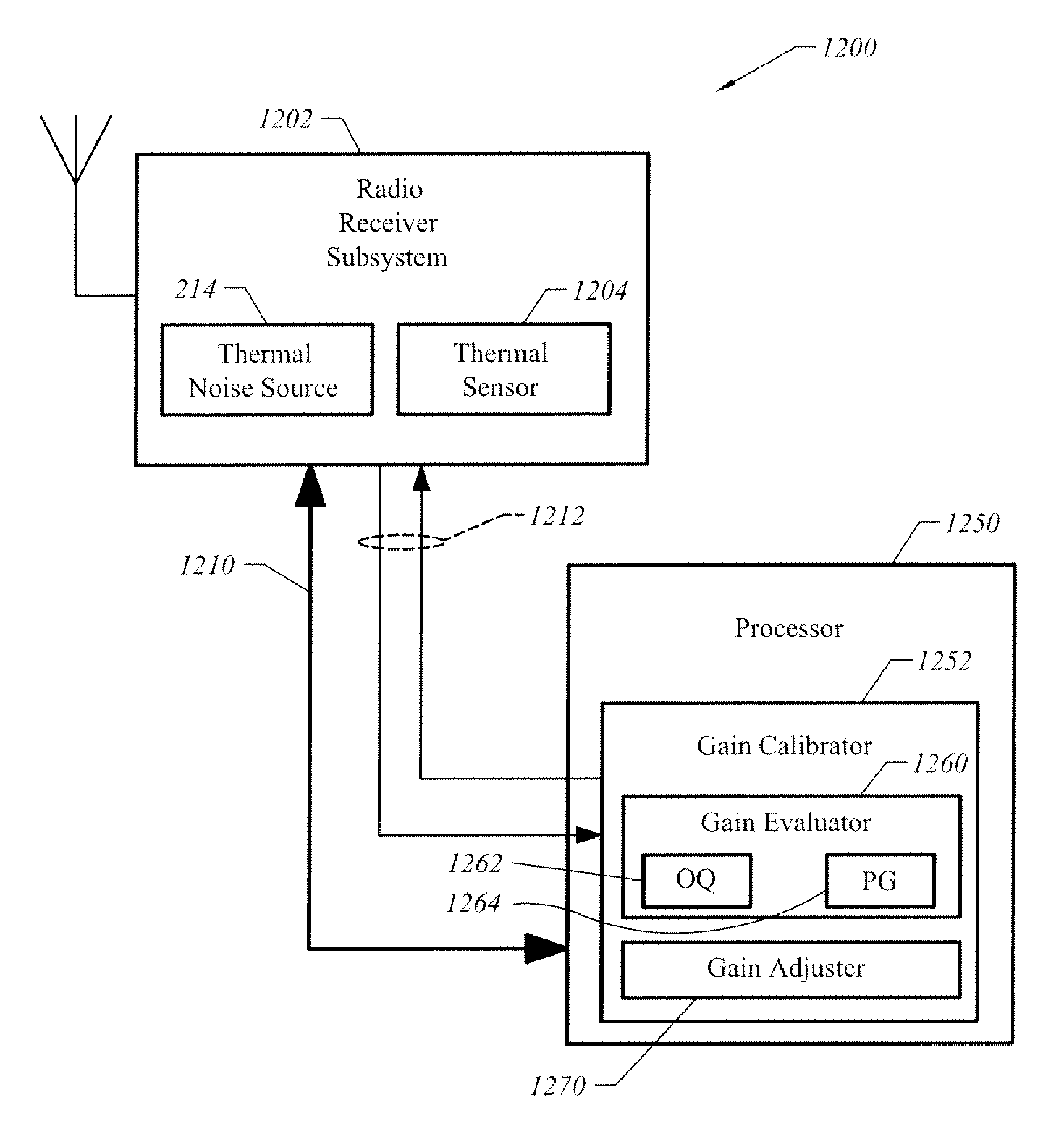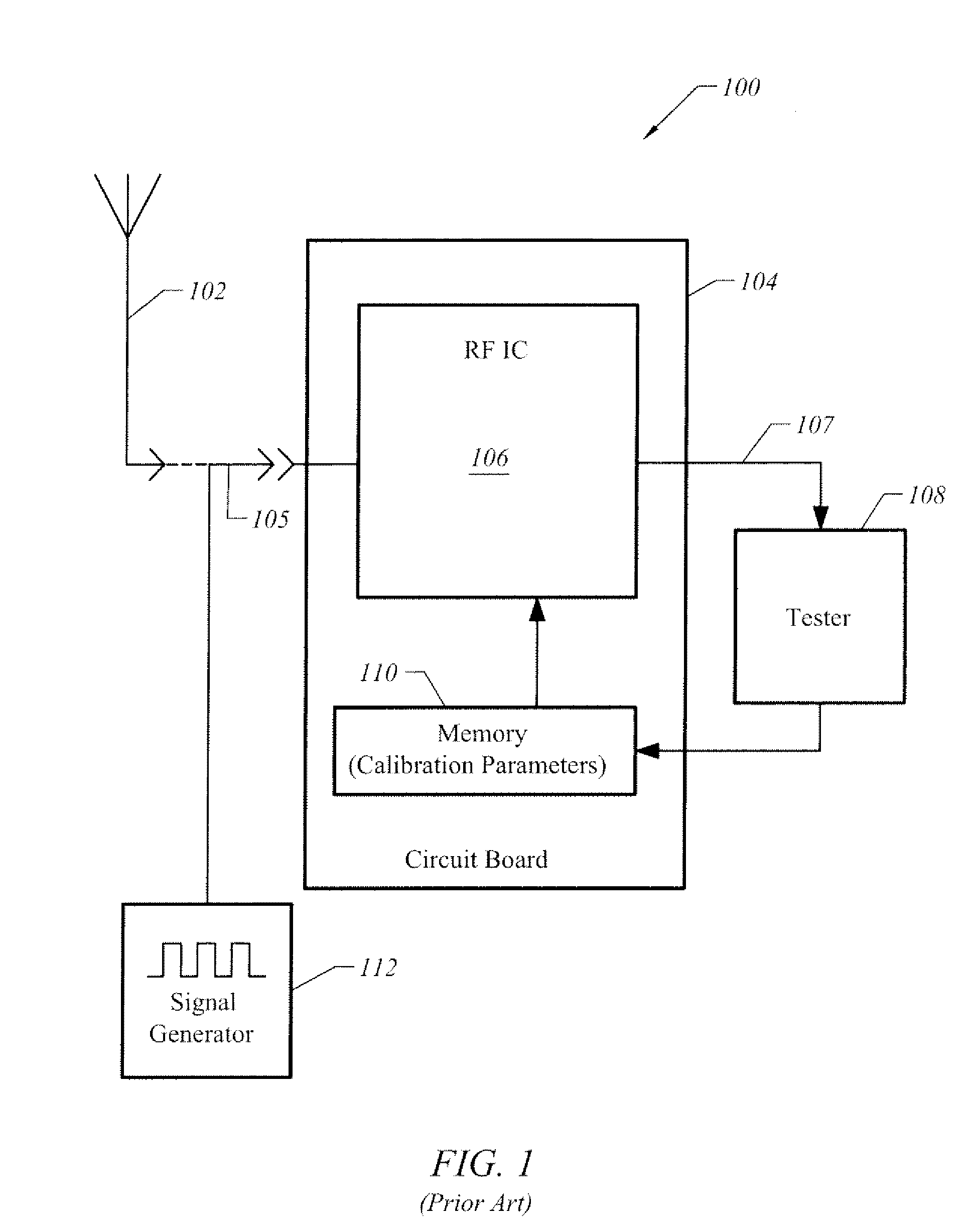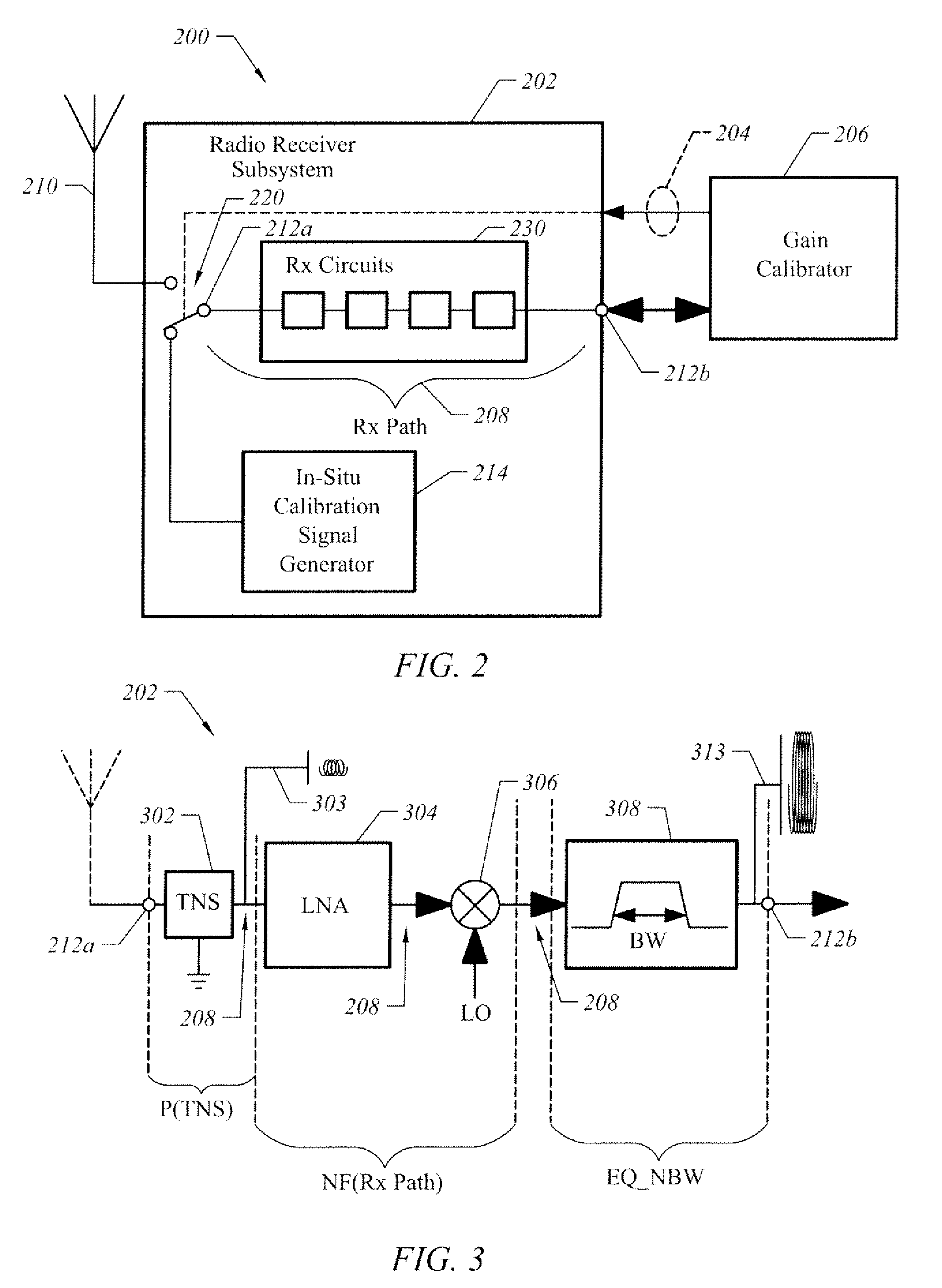In-situ gain calibration of radio frequency devices using thermal noise
a radio frequency device and gain calibration technology, applied in the direction of power management, transmission monitoring, receiver monitoring, etc., can solve the problems of large variation in amplifier gain, complex and expensive, and inability to build rf receivers in cmos, etc., to improve calibration accuracy and robust noise figure value
- Summary
- Abstract
- Description
- Claims
- Application Information
AI Technical Summary
Benefits of technology
Problems solved by technology
Method used
Image
Examples
Embodiment Construction
[0022]FIG. 2 is a block diagram illustrating an apparatus having at least two modes of operation, one of which is a mode for performing in-situ calibration of the gain of an RF receiver in accordance with one embodiment of the present invention. In this example, apparatus 200 is bi-modal in that it operates in one mode to receive communications as radio signals, such as those within the radio frequency (“RF”) bands, and operates in another mode to perform in-situ calibration independent of external calibration signals.
[0023]Apparatus 200 includes receiver (“Rx”) circuits 230 through which radio receiver amplification path (“Rx Path”) 208 propagates radio signals in a first mode (i.e., “receiver mode”). Rx circuits 230 influence the signal propagation characteristics of Rx Path 208. Examples of “Rx” circuits 230 include amplifiers (e.g., such as a Low-Noise Amplifier, or “LNA”), mixers, filtering circuitry, such as an intermediate frequency (“IF”) filter, analog-to-digital converters...
PUM
 Login to View More
Login to View More Abstract
Description
Claims
Application Information
 Login to View More
Login to View More - R&D
- Intellectual Property
- Life Sciences
- Materials
- Tech Scout
- Unparalleled Data Quality
- Higher Quality Content
- 60% Fewer Hallucinations
Browse by: Latest US Patents, China's latest patents, Technical Efficacy Thesaurus, Application Domain, Technology Topic, Popular Technical Reports.
© 2025 PatSnap. All rights reserved.Legal|Privacy policy|Modern Slavery Act Transparency Statement|Sitemap|About US| Contact US: help@patsnap.com



